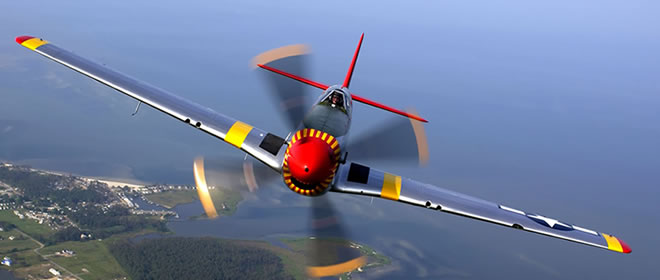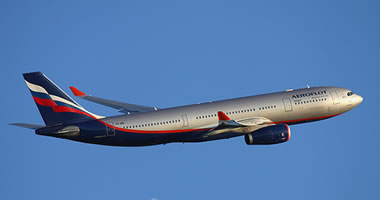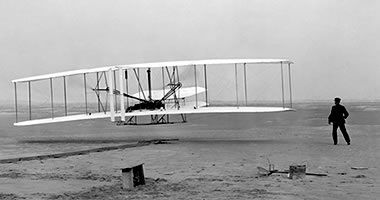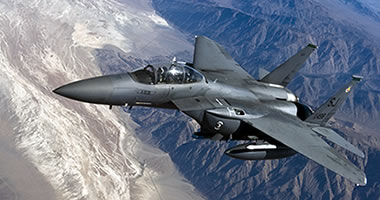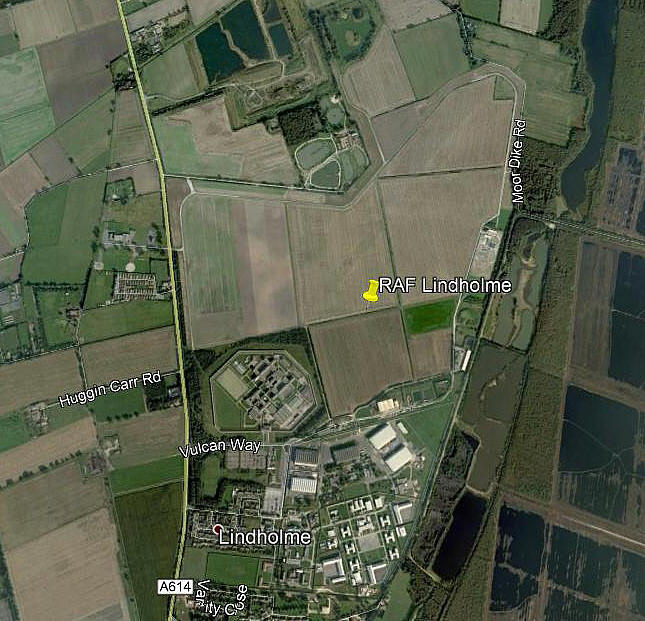Lindholme
LINDHOLME: Military aerodrome (Also known as HATFIELD WOODHOUSE)
Note: This picture was obtained from Google Earth ©
Although evidence of the runways can barely be seen, the outline of the airfield is still clearly visible.
Military users: WW2: RAF Bomber Command 5 Group
408 (RCAF) Sqdn (Handley Page Hampdens, then Handley Page Halifaxs. Later Avro Lancasters)
304 & 305 (Polish) Sqdns (Vickers Wellingtons)
7 Group
50 (Polish?*) Sqdn (Hampdens later Lancasters)
1656 HCU (Halifaxs?/Lancasters)
Post 1945: RAF Bomber Command 1653 HCU
1960 to 68: Bomber Command Bombing School (Handley Page Hastings & Vickers Varsitys)
1968 to 72: Strike Command Bombing School (Hastings +?) Moved to SCAMPTON
Gliding: Listed as operating in 1975
Note: The 1981 British Soaring Yearbook states that the 643 Sqdn Air Cadet Gliding School was operating here, as was the Humber Gliding Club
Location: E of A164, 7nm ENE of Doncaster
Period of operation: 1940 to 1978. (Some say 1985 and perhaps later?)
Runways: WW2: Originally all grass.
Later: 05/23 1829x46 hard 15/33 1280x46 hard
NOTES: Mainly because my mother served here as a WAAF during WW2 I really wanted to get the details correct but it would appear that the most excellent book Military Airfields (1939 to 1945) compiled by Steve Willis and Barry Hollis, (which has provided much of the back-bone information for this 'Guide'), shows they made, (I hope it’s the only one), a very obvious cock-up here. One runway is listed as 232 and the other as 230. The other runway is according to the map of the aerodrome obviously pretty much at a right-angle to runway 232. I suspect a simple typing error where 230 should probably read 330?
There is one pretty obvious difference between this and virtually every other RAF bomber base in WW2. This aerodrome had two rather than the usual three runways. Does anybody know the reason for this? I think it is correct that only about six WW2 airfields had just two 'hard' runways?
A PERSONAL TALE
On the 26th of August 2002 I took-off from CROSLAND MOOR near Huddersfield with my wife for WICKENBY aerodrome intending to find LINDHOLME and fly a couple of orbits dipping a wing in salute to my mothers memory, (she passed away many years ago), because she served here in the WAAF. We easily found LINDHOLME only to discover it is now a prison, (like so many other WW2 aerodromes), but I was fascinated to see what appeared to be several WW2 aerodrome buildings including at least one hanger, (and the control tower if my memory is correct?), still surviving within the prison complex.
SOMETHING TO CONSIDER
This might be as good a place as any in this 'Guide' to illustrate a very stark statistic in WW2 Bomber Command history. A survey held in one PoW camp revealed that the average number of sorties undertaken before being shot down was SIX!
As mentioned elsewhere it really does seem that without too much doubt today that a large number of Nazi sympathisers or even active infiltrators were involved and active within the upper echelon structure of the Air Ministry and RAF Bomber Command? For example, looked at today, the bomber routes planned and the method of attack certainly seem to be deliberately designed to give every advantage to the Germans. Reading some accounts by aircrew this opinion appears borne out. Indeed, it is known that some more experienced crews plotted their own course to the target and I have read one account of a pilot re-training as a navigator in order to increase his chances of surviving the war.
What is certainly beyond any doubt is that especially during the 1943 to early 1944 major bombing campaigns every advantage to enemy forces to inflict maximum damage on RAF aircraft and crews was deliberately planned into nearly every raid.
Indeed, in the earlier years of the war, most raids were constituted in such a way that only 'minimal damage' was inflicted on target areas. A detailed survey was conducted which showed that remarkably few bombs fell on the target and many fell miles away, often on open countryside - which appalled Churchill. This said, at that time navigation at night was extremely difficult and it was mainly the advent of a combination of radio navigation aids such as 'Gee' and 'Oboe', and of course the formation of 'crack' Pathfinder squadrons to illuminate the target(s) with flares, which turned the situation around.
It is probably still not fully appreciated that the splendid work of boffins, and, we must not forget - the photo-reconnaissance pilots, which eventually gave the RAF an advantage which the Germans could not match.
A CONTENTIOUS ISSUE?
Some say that this aspect of the bombing campaign, (strategy plus navigation), changed quite dramatically when Bomber Command came under the central command and planning of SHAFE when the US Forces took overall responsibility for the conduct of the war. As said elsewhere I now think the biggest criticism of Sir Arthur ‘Bomber’ Harris, (known as ‘Butcher’ Harris to his airmen), was that he didn’t appear to see this going on under his command in the early years? After fifteen years of research I now believe that this is a far too simplistic view. It now seems to me at least that the 'area' bombing of German cities was the only means we had of hitting back at Germany - and we had a bloody good excuse - because they had started it with the Blitz regime on British cities. "You shall reap what you sow".
Without any doubt whatsoever Germany deserved every single raid, including Hamburg and Dresden. It is a very sad fact of history that in any major war, it is the civilians that suffer most. I do hope they teach this lesson in schools today.
THE POLISH ELEMENT
My mother told me that when she served at LINDHOLME the aircrew were Polish.
*As far as I’m aware and according to a web site dedicated to Polish RAF squadrons, there wasn’t a ‘Polish’ 50 Squadron? This seems supported by the fact that 50 Squadron arrived at RAF WADDINGTON (LINCOLNSHIRE) when it opened in March 1937 flying Hawker Hinds before being posted here, by then flying Handley Page Hampdens in 1940.
The Polish squadrons were; 300, 301, 302, 303, 304, 305, 306, 307, 308, 309, 315, 316, 317, 318 and 663.
My mother also said that after the war ended she and all the other WAAFs were invited to fly across Germany, with Polish aircrew in Lancasters, to see what had been achieved. She was utterly appalled at the endless scenes of devastation. I suppose that excluding the atomic bomb attacks on Hiroshima and Nagasaki, nothing as bad as this, and on a scale as large as this, had ever been seen before in human history?
Generally speaking, and so typical, neither of my parents wanted to talk about their wartime experience.
ON A SOMEWHAT LIGHTER NOTE
I have found a record that 663 (Polish) Squadron were based here at one point. It appears they were later flying Austers on Artillery Observation Flights during the invasion of Italy.
A GHOST STORY
As said elsewhere no account of British ‘Flying Sites’ for a ‘Guide’ can exclude some ghost stories. So please excuse my indulgence to include quite a large inclusion here from Military Ghosts by Alan C. Wood if only for sentimental reasons. “RAF Lindholme, 7 miles east-north-east of Doncaster, began life in 1938/1940 as a No.5 Group bomber airfield, with two runways and thirty-six hardstandings. It was only 20 feet above sea level, with Lindholme Lake 3 miles east, and marsh bogs at the end of one runway. The last RAF usage was in 1978. At present it is HM Prison, Lindholme.”
“On 20 July 1941, No. 305 Polish (‘Weilkoposki’) Squadron moved into RAF Lindholme, and equipped with Vickers Wellington 1C aircraft. The squadron commenced night bombing raids into the Ruhr valley of Germany which continued until August 1943, when it transferred to day bombing. After a bombing raid over Cologne, a Wellington overshot runway 232 and sank out of sight in the peat bog; none of the aircrew were found. Second World War legend has it that a badly damaged, Polish-piloted Wellington bomber, returning one night from bombing Germany, had a badly wounded sergeant pilot who ordered his crew to bale out, whilst he attempted to land the stricken bomber. The aircrew baled out, leaving the pilot alone. The Wellington aircraft came down in Lindholme Bog, and disappeared beneath the surface.”
“Three weeks or so later, the Station Padre was on the airfield at night, when he saw a blood stained figure in Second World War flying clothing approaching. The figure said, ‘Sir, can you direct me to the Sergeants’ Mess?’ in a strong Polish accent. The padre pointed to the nearby Sergeants’ Mess, and the figure walked away into the darkness before the Padre could offer assistance. The wounded Segeant pilot was seen by others at Lindholme airfield, and on one occasion spoke to the Station Commander Group Captain, asking the same question. As the figure disappeared, the Group Captain ordered a search of the area, but nothing was found.”
“The Second World War ended, but on numerous occasions the ghostly, wounded Sergeant pilot kept appearing at Lindholme, still asking the same question, and always disappearing. He came to be known as ‘Lindholme Willy’. One version of the legend has it that the bomber crashed into the bog, killing all but the wounded pilot, who managed to stagger from the aircraft – in the bog – and die on the doorstep of the Sergeants’ Mess.” This is where Mr Wood invariably lets himself down. The first part of his story has a degree of credibility, the last part would certainly be a matter of fact, (if it had happened), recorded in the Station and Squadron records? As per usual a combination of fact and fiction to invent the story.
“Other legends abound about the Lindholme ghostly airman/airmen – one has it that there is a Hampden light bomber still down in the bog, with the dead aircrew aboard. Handley Page Hampdens, aircraft of 50 Squadron, were based at Lindholme, and took place on the first RAF bombing raid on Berlin, on the night of 25/26 August 1940.”
But bear with me, he does reveal some strange facts it seems. “In 1975 , Fisons Fertiliser Company dredged Lindholme Bog, known as Hatfield Waste, for peat, and found the wreckage of a crashed Wellington, identified from its geodetic construction. In the cockpit were four unidentifiable human remains. A Wellington aircraft carried five aircrew.” Here again this author displays quite appalling ignorance, the crew of a Wellington would not have had four crew members in the cockpit. Indeed, being very pedantic, generally speaking large aircraft such as bombers etc do not have cockpits as such, the term applying to the confined space the pilot, or possibly a pilot and a second crew member occupy, in smaller aircraft.
But of course, even today, many people will still refer to the flight deck on an airliner as - "the cockpit".
“On 23 July 1987 a Fison’s workman, digging for peat, found the peat-preserved body of a Polish airman, which bore injuries consistent to him falling from an aircraft at height. The airman’s body could not be identified. He was buried on 11th November 1987, at RAF Finningley.” Even this story begs a question. All RAF aircrew wore a ‘dog-tag’ by which their remains could be identified.
The only reason for including this is because I love the myth and legend which abounds. And, one small part of me still asks - can there be any truth in this?
MODERN NEWS
In January 2018 I was kindly contacted by somebody working at LINDHOLME, but who wishes to remain anonymous. He tells us; "I can confirm the control tower is still standing and will continue to do so for a while as it is used as a training venue for Prison Service dogs who are also based on the perimeter road."
"All of the hangars remain and are in use but are surrounded by high fencing as part of the three prisons on site. The main Hatfield Moor prison was newly built and is seperate from the original airfield. The other two are located around what appear to be the original Mess Hall in the SE of the base."
"Not too sure about ghost stories tho I do spend a lot of time around the moors/peat bog area. I have never found any of the crash sites and they certainly aren't obvious."
Steve Parsons
This comment was written on: 2016-12-02 16:29:32Sent from my iPad Sirs, I was employed at RAF Lindholme in 1968/69 with MPBW as works plumber. The works complex was located at the far end of the camp away from the living quarters. The time of year was probably November and as I was making my way back along the road which was poorly lit I observed a figure in flying jacket and boots cross in front of me about 100 yards in front. The weather was foggy and it was dark apart from the poor lamps. The figure came from the airfield and made it's way to an equipment store that supplied flying jackets to the trainee flying cadets that used the chipmunk trainer. I thought nothing of this incident until I was well past this point but being curious as to why anyone should be flying in this weather turned around and went back to the store to ask who had come in wearing wartime flying gear only to be informed that no one had come in the store in the last 4 hrs as the weather was too bad. So was this "Lindholme Willie" I had observed I always like to think so.
Reply from Dick Flute:
Hi Steve, What a fascinating story - many thanks. I shall keep this posted. Best regards, Dick
Gordon Jameson
This comment was written on: 2017-10-20 17:23:48Sorry to say this but the incident of 1968/69, was me and some other, we went to a compound with chain link fencing, cut off the gate lock & the door locks and stole all the scrap copper wire that was stored on there, we saw the Air man but we just carried on walking with our bags of copper I often chuckled to my self when there used to be TV adds about RAF police dogs. we also took all the copper cable from off the peat bogs we never saw a thing only bloody snakes, one time we did see the cops & air works van restocking the ROC Bunker at the northern end of the Airfield late at night,
Reply from Dick Flute:
Hi Gordon, Thanks for owning up. I shall keep this posted. Best regards, Dick
Leslie Syree
This comment was written on: 2017-10-25 21:34:32In 1959 I was stationed at R.A.F. Lindholme and worked in the SHQ Orderly Room. I heard stories that Lindholme Willy haunted the Station Headquarters. When it was my turn to be "duty clerk" for the night I took no chances and always locked myself in the small room provided for that job and nothing would get me out of that room until daylight... Needless to say, I never saw anything of "Lindholme Willy" but I was always glad when morning came.
Reply from Dick Flute:
Hi Leslie, Many thanks for the memory which I shall keep posted. It is starting to look like 'Lindholme Willy' is becoming something of a feature. Best regards, Dick
Terry Clark
This comment was written on: 2018-01-10 16:41:281960/61. My brother goes to ATC camp at Lindholme. He told me there were a number of Linclolns parked on the airfield having just been withdrawn from use. The cadets were allowed to go and explore them. I presume these had been replaced by either the Hastings or the Varsities of BCBS as the HCU would surely have disbanded many years before. What a tragedy that not a single one or even parts of one was saved for posterity. 1965. I visit for ATC camp. BCBS still in residence with the Hastings and Varsites, the former all being grounded with some sort of airframe problem so we 'had' to fly in the Varsities! Also on the station was a Bomb Scoring Unit which used to 'compute' the theoretical track of a bomb by tracking the height, position and speed of the 'bombing' aircraft (whch didn't actually drop a bomb) to check the accuracy of the bomb aimers and just across the A614 on the west side of the airfield was an Air Traffic Control Radar Unit which in those days was called 'Humber Radar' and had a huge radar scanner spinning slowly around. When we visited this, we were told it was originally designed for Air Defence rather than Air Traffic Control, being the main 'spotting' radar for the Bloodhound missile sites to the east which in turn protected the local Thor missile sites. 1972. Cadets from my Air Training Corps Squadron visit Lindholme for annual camp. The airfield is preparing to be closed and its aircraft transferred, but there is a Victor undergoing some major maintenanceis still in one of the hangars. 1973. Little did I realise in 1965 that just 8 years later I would be detached to Lindholme for Area Radar training as part of my Air Traffic Control Officer course but I was. The unit now called 'Northern Radar' now had civil controllers working alongside tthe RAF ones each operating their own traffic in the same airspace. Lindhome Willy. I lived in the Officers Mess durng my detachment. One evening I was walking from the TV room to the bar along a corridor which passed the snooker room. The door to this was ajar, there was a light showing and i could hear the balls 'clicking' as if someone was playing. As occasionally, one of us civil or military controllers might slip in there for a solo knockabout, I poked my head round the door to see who it was. The room was empty! No other doors, windows closed, a ball still rolling across the table! I could feel a double whisky beckoning at this point so I continued my walk to the bar where I told the others in there about this. Some confessed to having similar 'experiences including an Singapore Air Force Officer who was on a course at the Bombing School and had never heard about Lindholme Willy! One of the RAF guys then told a great story. Back in the days when the runway caravn was the towed type rather than being self-propelled; they had finished flying for the day due to deteriorating wqeather; the guy in the caravan was waiting for a towing vehicle to `come and pick him up and suddenly, there was a knock on the door!` Now the airman hadn't seen any vehicle drive up and on looking out of the 'glasshouse', all he saw near the door area was a white shapeless object so presumably thinking Lindholme Willy was paying him a visit he did the only logical thing; crashed open the door and legged it across the airfield! Which rather surprised the person outside; he was a USAF F100 pilot who had been unable to land close by due to the weather, had run short of fuel and ejected, and happened to land on Lindholme airfield. He had then gathered up his billowing white parachute and walked towards the only light he could see; that on the runway caravan. On arrival in the usual courteous American way, he had knocked on the door before entering. You know the rest. .
Reply from Dick Flute:
Hi Terry, Now then, this is what I call an account. Great stuff and all much appreciated. Many thanks and very best regards, Dick
Alan Perry
This comment was written on: 2019-01-19 13:10:02I came across this site via a Family History page on FB whereby a enquiry had been made by someone regarding a family members involvement with another Station. That prompted me to make a search for Lindholme as I spent a weeks summer camp there back in 1962 I think it was when a Cadet with the ATC. I still have the photo of our Squadron formed up in front of a Hastings along with I assume the C/O at that time. My memories of that week are few now but can remember a flight in either a Hastings or Varsity (may have been both) being a highlight of the week. What sticks in my mind re that flight was that I had to sit on the floor of the aircraft during take off and landing and bracing myself by the rivets on the floor. Also viewing I think, Scarborough, as we flew over through a dome which must have been in the top of the fuselage as I don't remember going onto the flight deck or any windows. Also our trip in the back of a truck to visit a V Bomber Station somewhere in the area but location unknown now. I remember we were allowed inside a Vulcan but I only recall the deck with 3 seats facing the rear and not the Pilots area. What we did for the rest of the week now escapes me other than being on parade, mealtimes in the NAFFI and some of my fellow cadets being shoved down a flight of stairs in a locker. Kids will be kids. Polishing the floor of our barrack room. Waking up one morning with boot polish smeared over my face, again kids will be kids. Oh and boarding a bus on our last night from just outside the station to somewhere where there was life. Don't remember the return journey. What I find interesting are the tales of Lindholme Willy. I had forgotten about him completely until now. I never saw him and do not remember any sightings by any of us but can vaguely remember being told of him while we were there. Thanks for a very informative site.
Alan Morris
This comment was written on: 2019-03-02 15:36:06I have just read a comment relating to the 1987 discovery of a Polish airman and his identification. I can confirm that my father who served at Lindholme in the late 1940s (rear gunner Lancaster’s) identified part of the airman’s tunic as signifying he was Polish. I cannot remember any details and my father passed away two years later. We were contracting to hmp lindholme at the time of the discovery.My fathers pilot was Polish and this may have given him the knowledge required.
chris
This comment was written on: 2020-04-08 21:39:47...just bought the property at the far end of what was the runway, now opposite the Moorlands wing ,and told by previous owner that a plane crashed into it sometime 40's , killing the 3 airmen aboard - any truth ?
Beryl Freeman
This comment was written on: 2020-05-01 14:32:47Did a course at RAF Lindholme in early 1970’s. Heard a few stories especially about a Lancaster recovered from the marshland at the end of the old runway which was near the tennis courts by the ‘70’s. Sadly, I never did hear Billie Lindholme ring his bicycle bell.
Ivan
This comment was written on: 2020-06-25 15:01:03I was posted to RAF Lindholme in May 1954 and worked firstly in the Instrument Section, then ASF and lastly on B Flight. At that time there were Lincolns and Varsities. Rumours or Billy Lindholme were rife. One episode I well remember was that I did the calibration of a Mk.14 bombsight computer, which was then fitted to a Varsity that dropped 25lb smoke/flash bombs on the bombing range. One of the bombs went way off the target and killed two pigs belonging to a neighbouring farm. My neck was in the noose, until I raised a point that the technician on the squadron who fitted the computer could have bent the gyro blade when he removed the paper wedge, so with no clear blame they dropped the inquiry. Phew !!!! I left Lindholme January 1956, posted to Marham, known then as El ADEM with grass! Left the piston engine era to work on Valiants. Happy Days!
Alistair Gilbert
This comment was written on: 2021-03-06 22:38:54No real story but around 1960 I was at summer camp with the ATC at Lindholme. I well remember the flight in a Varsity standing up and looking out of the stardome as the aircraft banked. The view straight down the wing pointing at the earth was spectacular. I was with Paisley ATC and another sqdn there at the same time was from Ystrad Mynach. My uncle had been in the RAF in bomber command as a Sergeant navigator and stayed on and ended up as a Warrant Officer. I joined the Fleet Air Arm lol in 1964 and maintained Buccaneers, hunters, and also Canberra T17 at RAF Watton/Cottesmore on 360 sqdn.
We'd love to hear from you, so please scroll down to leave a comment!
Leave a comment ...
Copyright (c) UK Airfield Guide




